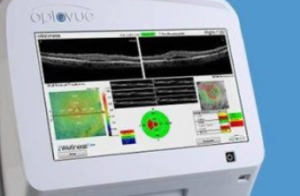Are you feeling pain in your eye, but not sure what it is? It could be a sign of a serious eye problem.
The eyes are generally a painless and quiet part of the body, allowing us to see the world around us, changing focus and moving in thousands of directions throughout the day.
If you are experiencing eye pain, it is vital to immediately contact your eye doctor to discover the cause and find the best treatment.
Eye pain can be superficial or internal. Here are some of the most common reasons you may be feeling eye pain.
Superficial eye pain
Pain on the surface of the eye is known as superficial eye pain. This usually occurs as a result of infection, trauma or the presence of a foreign object, and is usually treated with eye drops or similar solutions.
Common causes of superficial pain include:
1. Foreign object in the eye
The most common reason for eye pain is having a foreign object in your eye.
Sand, dirt, eyelashes or makeup can often get into your eye, causing redness, itchiness, watery eyes and eye pain.
Often your eyes can flush out these irritants on their own with tears, but if this doesn’t seem to be working, rinsing your eyes with water or artificial tears can help.
Try not to rub your eyes to get these objects out, as you may accidentally scratch your eye.
2. Blepharitis
Blepharitis is an inflammation of the eyelids and occurs when the oil glands on the edges of your eyelids get clogged, causing irritation and swelling, which can result in eye pain.
Fortunately, there are a number of treatments available to help clear up blepharitis. Speak to your eye doctor for more information.
3. Sty
A sty occurs as a result of infection in the glands of the eyelids. This infection can create a painful bump or nodule on the eyelid and the area around the bump can be very tender or painful when touched.
Depending on the location of the sty, and whether it’s directly affecting your vision, your eye doctor may prescribe antibiotic ointment or may give you a steroid shot to reduce swelling. If it is very minor, they may also recommend simply letting it heal on its own.
Note that while the eye doctor may choose to drain the sty in-office if it is not responding to the medication and affecting your vision, you should never try to do this yourself, as it may spread the infection or result in permanent scarring of the eyelids.
4. Corneal injury or dry eyes
The cornea is the very front, clear dome-shaped part of the eye.
Untreated dry eyes can eventually result in corneal damage or scarring — both can be the cause of severe eye pain.
Injuries that occur to the cornea, such as scratches from foreign objects in the eye and chemical burns can be very painful.
While superficial corneal scratches may normally heal without medication, your eye doctor can still prescribe medicines to prevent infection and ease the pain of the scratch.
Deeper corneal damage such as corneal ulcer or other corneal conditions can cause severe eye pain, and require immediate medical attention.
For chemical burns, wash the eye out immediately with cold water and schedule an emergency appointment with your eye doctor or head to the nearest emergency room, to ensure that no long-term damage has been done.
5. Contact lens irritation
Improper use or care of contact lenses can result in irritation and eye pain.
Proper care should always be taken not to over wear your contact lenses, and to store and disinfect multi-wear lenses properly between each use. It is also important to replace contact lenses according to their monthly or daily schedule. Never wear contacts beyond their intended wearing time.
Speak to your eye doctor if you have any questions about proper storage, cleaning or wearing of your contacts.
6. Conjunctivitis
Also known as pink eye, this is an infection of the part of the eye called the conjunctiva caused by either bacteria or virus.
Lining the front of the eye and underside of the eyelid, this part of the eye can sometimes become inflamed as a result of allergies or infection.
Conjunctivitis is usually painful, and causes the eye to become red and sore.
A viral infection usually makes the eye water excessively, whilst a bacterial infection a yellowy discharge can appear from the eye.
SEE RELATED: Eye Emergencies
For more information about the causes of your eye pain and treatment, speak to your local eye doctor.
Internal eye pain
Pain inside the eye is what is known as orbital pain and will usually be an aching, stabbing or sharp pain, and may require extensive medical treatment to treat comprehensively.
Common causes of internal pain include:
1. Glaucoma
Glaucoma is an eye condition in which damage is caused to the optic nerve due to very high pressure inside the eye. Untreated glaucoma can result in a disabling vision loss known as ‘Tunnel Vision’.
Besides eye pain, a form of glaucoma, closed-angle glaucoma, can cause severe nausea, vomiting, headache and vision loss.
Closed angle glaucoma, is also known as narrow-angle glaucoma and occurs due to a rapid rise in inner eye pressure.
The rise in eye pressure causes severe eye pain and is a medical emergency requiring immediate medical assistance to prevent permanent vision loss.
2. Penetrating eye injury
Penetrating eye injuries occur when a foreign object, such as a shard of metal or glass enters the eye, piercing through the eye’s protective layer and damaging the fragile internal parts of the eye.
As you can imagine, any object penetrating the eye can cause a great deal of ocular pain, and should be considered an emergency.
You should not attempt to remove the object yourself, but contact the nearest emergency room immediately.
3. Optic neuritis
This condition occurs when the optic nerve, which sends visual signals from the eye to the brain, becomes inflamed. This inflammation causes loss of vision and eye pain.
Optic neuritis is also associated with autoimmune diseases such as multiple sclerosis and certain bacterial and viral infections.
4. Iritis
The iris is the colored part of the eye that gives you blue, green, hazel or other eye colors.
Iritis, also known as anterior uveitis, is a rare condition that occurs when the iris becomes inflamed, causing pain inside the eye.
Iritis is the most common, and least dangerous, type of uveitis and can affect one or both eyes, and usually occurs in people who are perfectly healthy.
When is eye pain an emergency?
All eye pain is a cause for concern and requires immediate medical care.
If the eye pain is accompanied by foreign objects hitting or penetrating the eye, or blurry or loss of vision, headaches, nausea or vomiting, contact your nearest emergency room.
LEARN MORE: Guide to Eye Exams
If you suffer with any type of eye pain, schedule an urgent appointment with an eye doctor near you.
Here are some of the most common reasons you may be feeling eye pain.
If you experience eye pain, always contact your eye doctor immediately.










